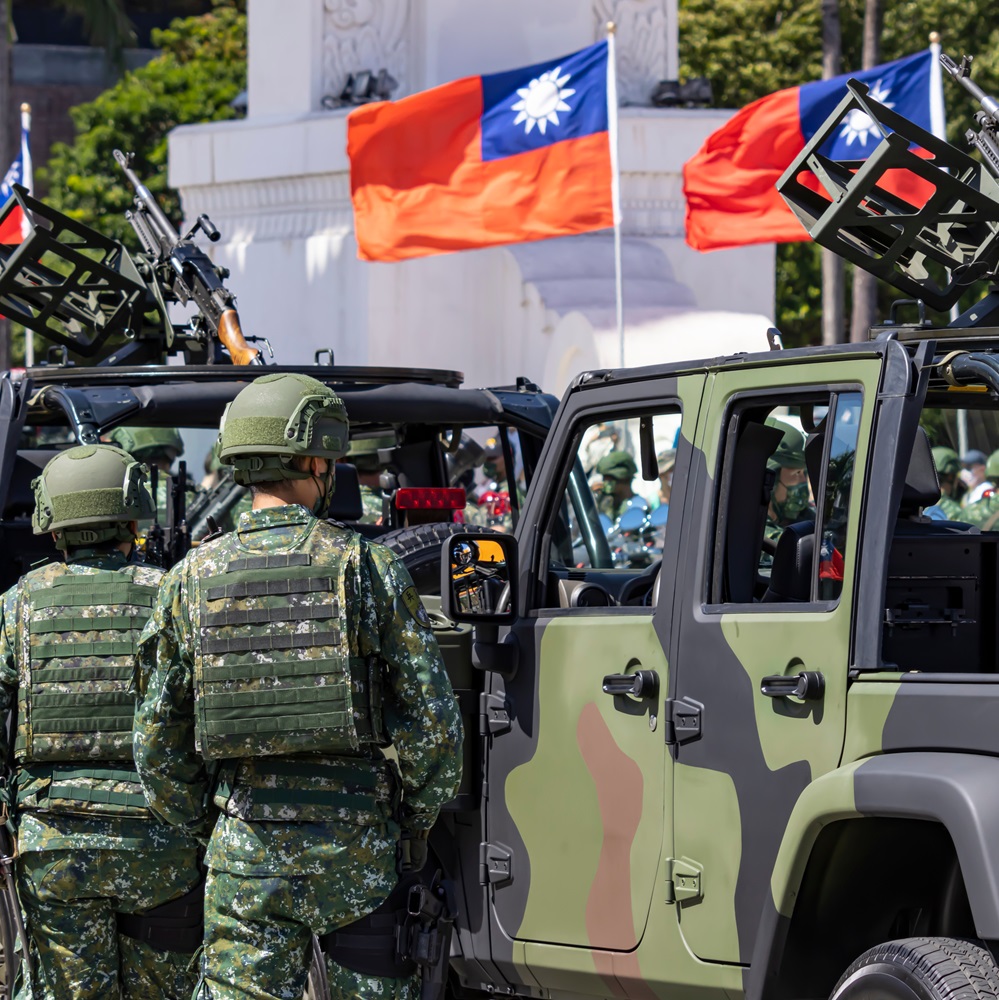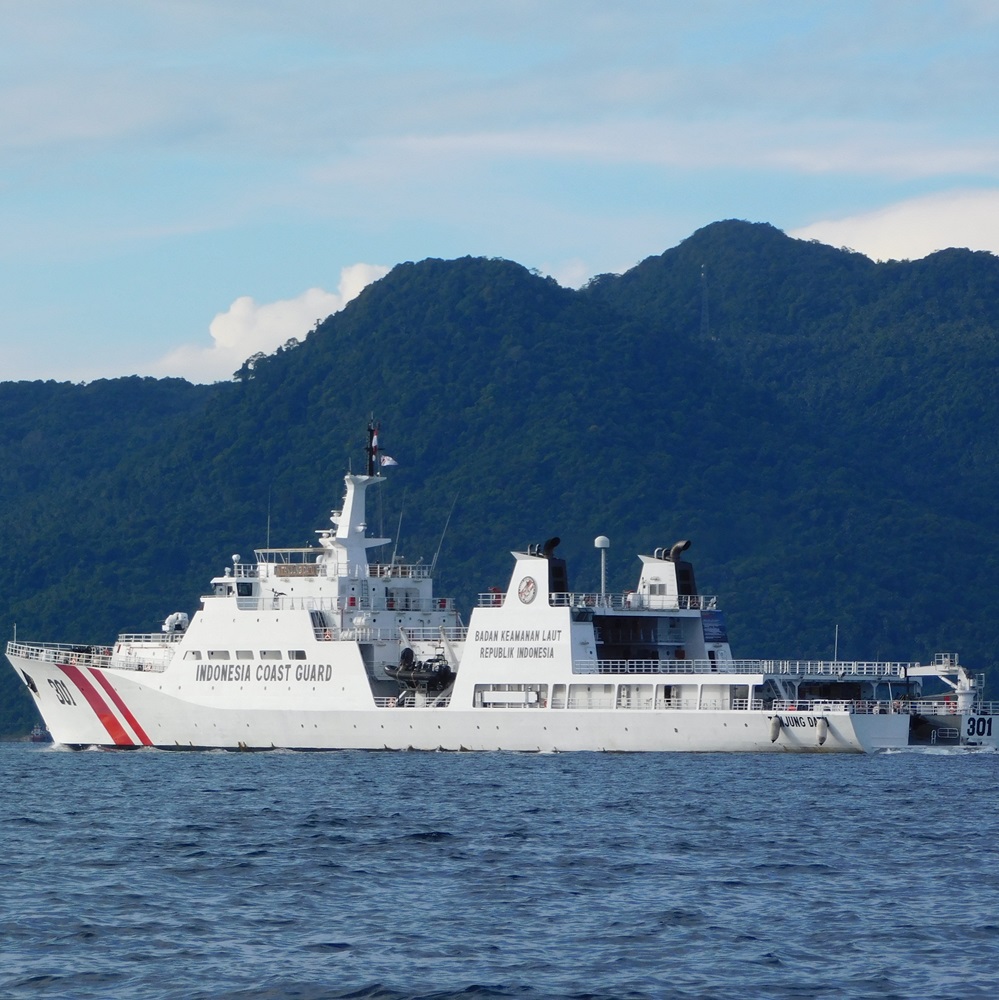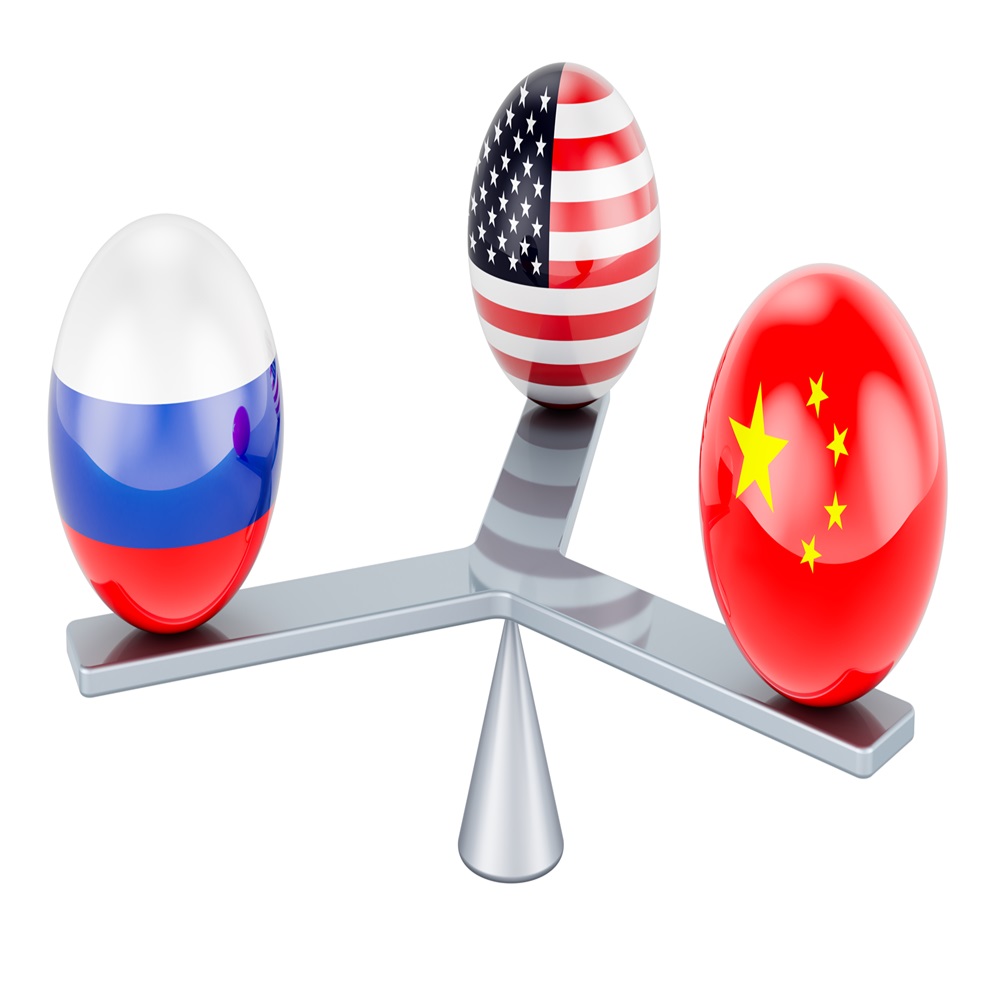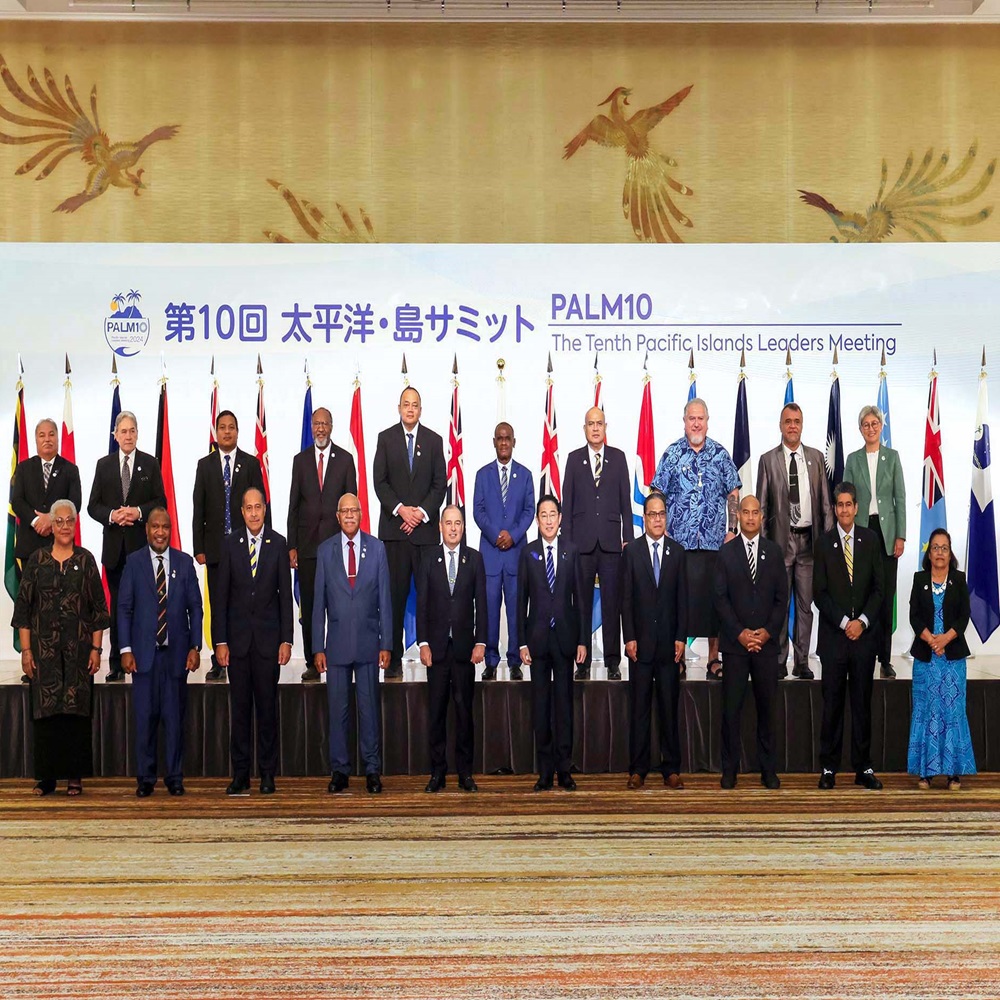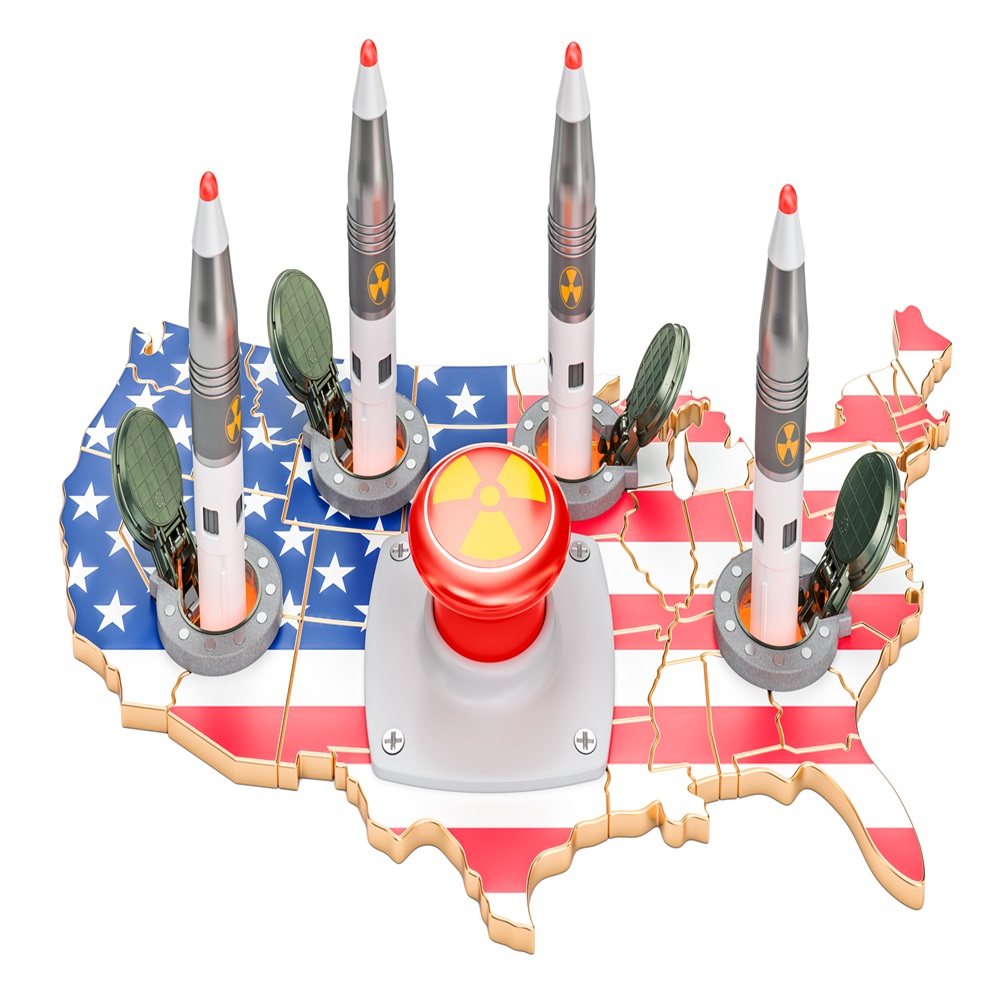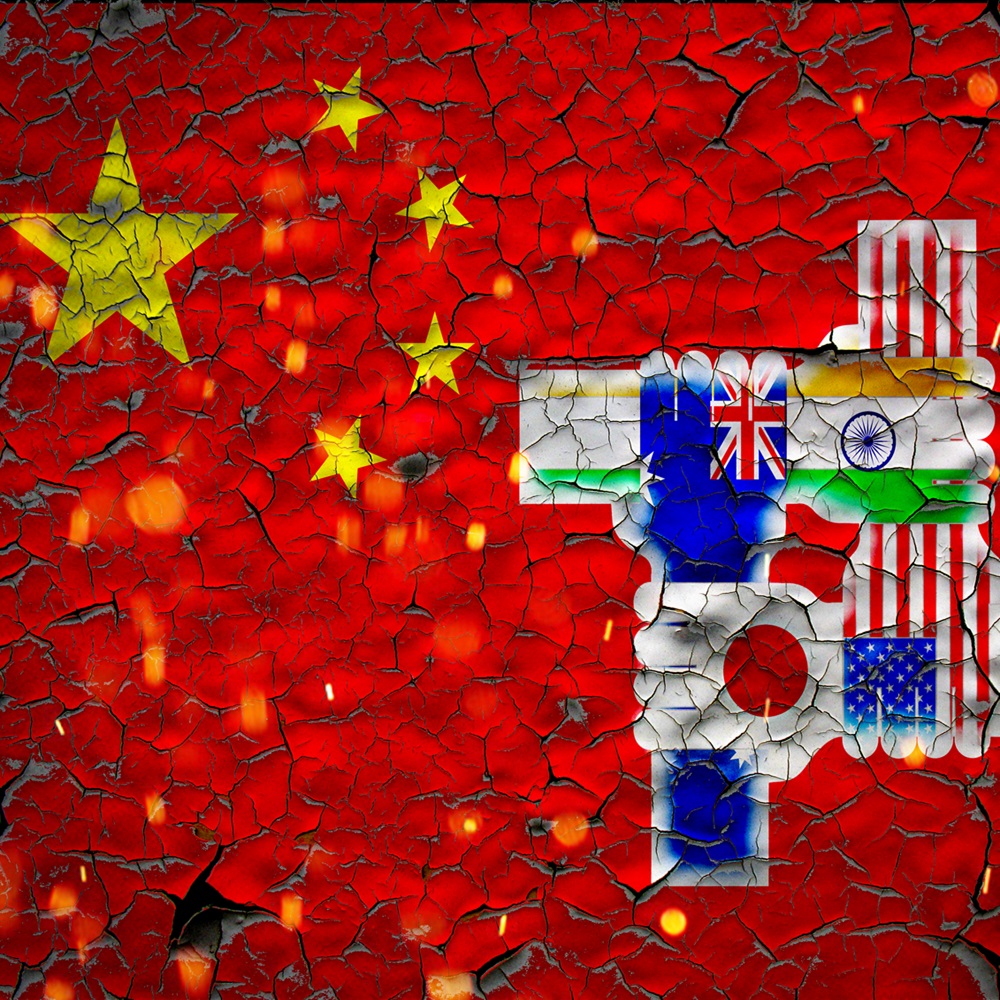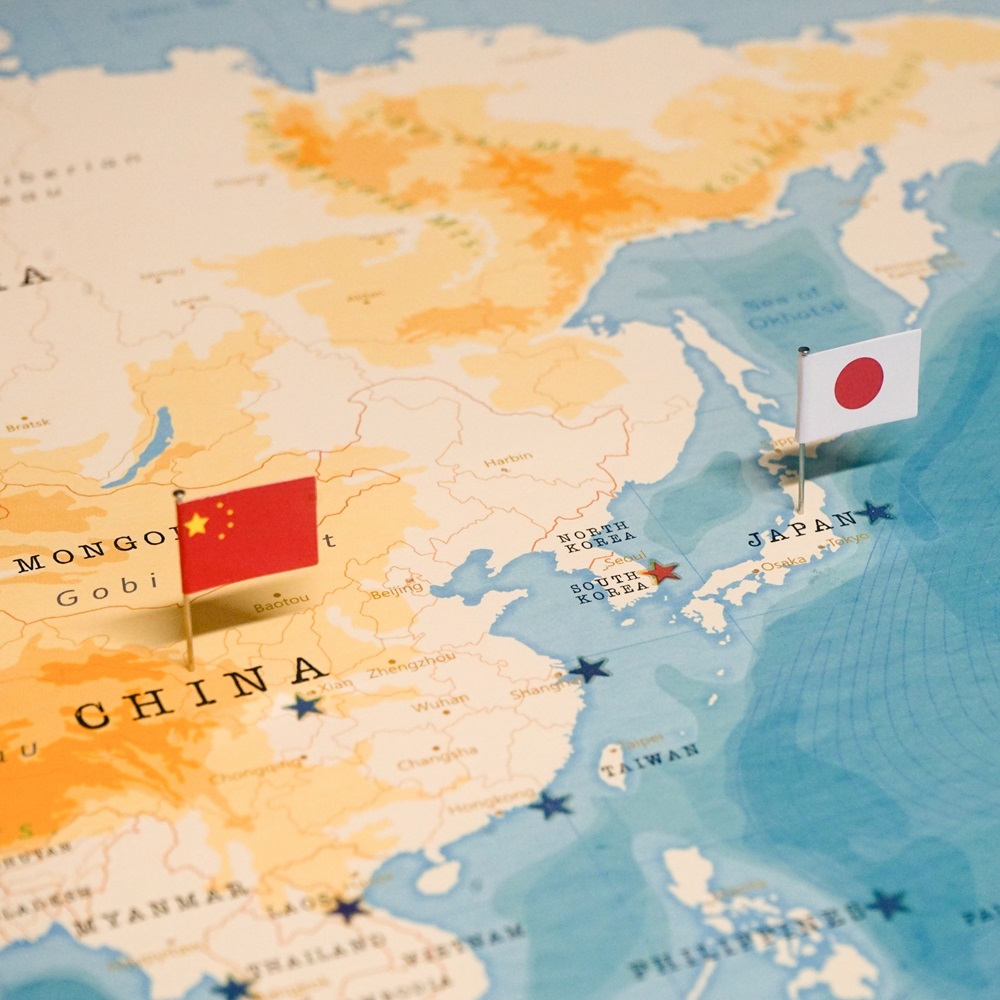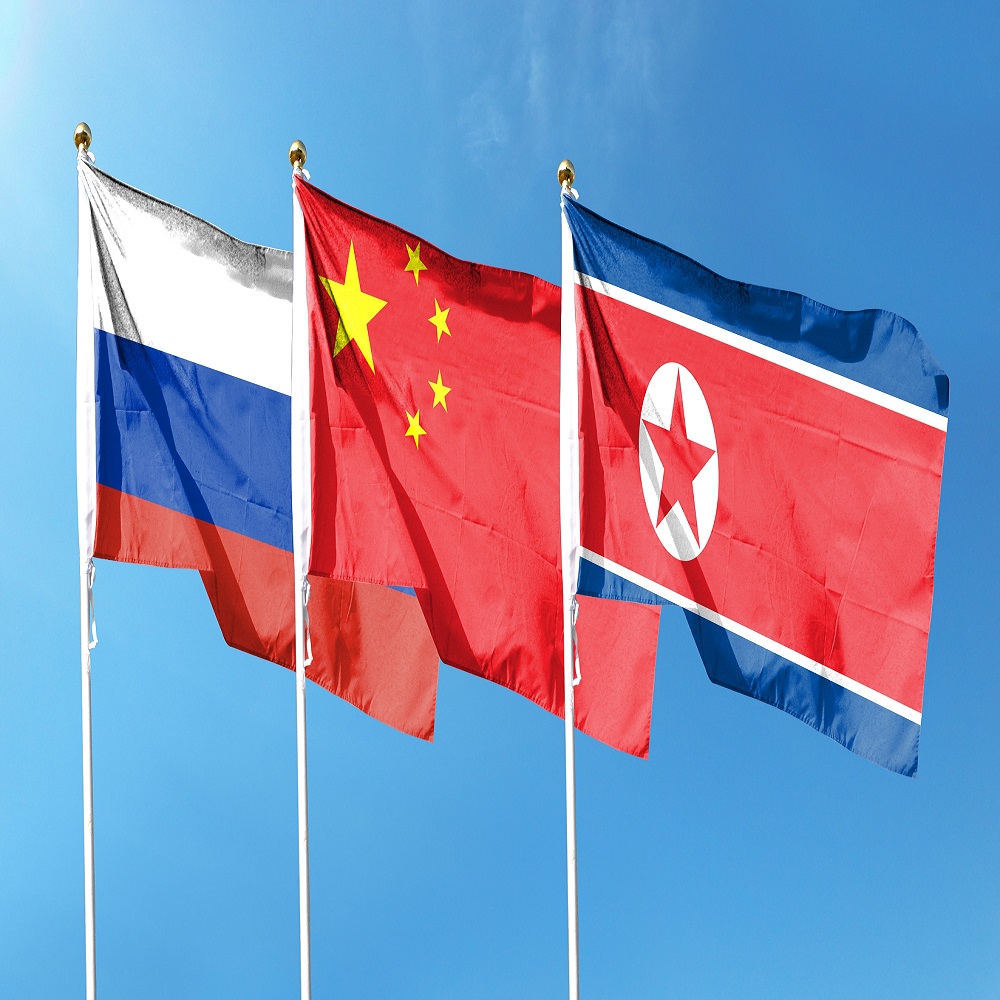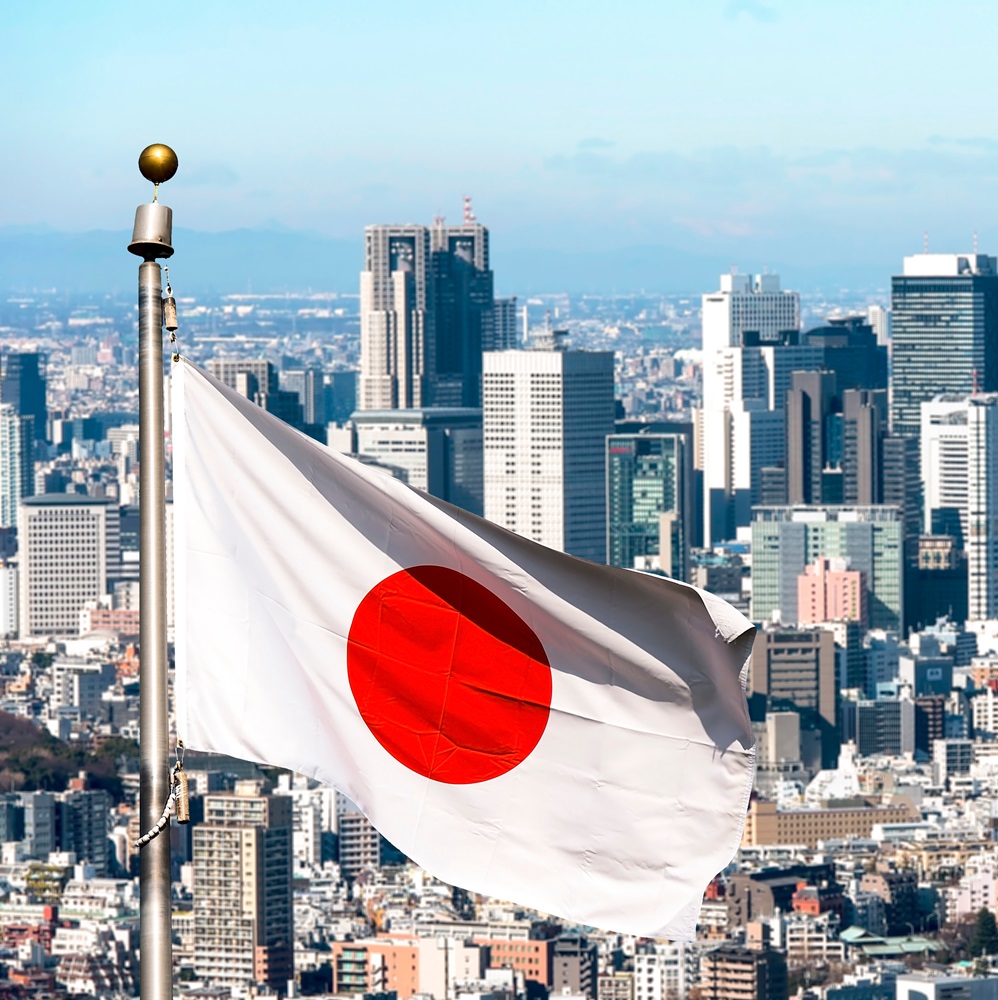
Japan on the path to strategic autonomy
by Javier Fernández Aparicio
한국어로 읽기 Leer en español In Deutsch lesen Gap اقرأ بالعربية Lire en français Читать на русском Abstract: Japan is going through a difficult domestic political period that coincides with the demands of the enormous geopolitical challenges posed by the threat posed by the increased assertiveness of China and Russia in the region, coupled with the risk of North Korea's nuclear programme. Uncertainty over the immediate future of the security relationship with the United States, which was tightened under former Prime Minister Fumio Kishida, also leads Japan to a dilemma regarding its own deterrence capabilities, as reliance on such an alliance may become another risk factor in the event that the United States reformulates it. Therefore, the search for Japan's own strategic autonomy is becoming increasingly important, firstly by accelerating remilitarisation that includes possibilities beyond strict self-defence and, as a second pillar, by seeking to create a mutual security organisation with other countries in the region to act as a deterrent to China, Russia and North Korea, bringing together the various bilateral and multinational treaties to which Japan is a party. Introduction The 27 October elections have left Japan in a complicated political situation. The ruling Liberal Democratic Party (LDP) won and remains the most represented party in the Diet, with 191 seats, but together with its current partner, the Komeito, the governing coalition fell far short of the 233 needed for a majority. Nevertheless, the current prime minister, Shigeru Ishiba, can continue to hold office and the punishment of the LDP seems to be read in a domestic context and not because of dissent over security and the country's external projection. Japan's stability is key to the region, so it seems unlikely that any government that is formed will affect the main lines of defence policy, as the concern remains an increasingly assertive China and the attitude of other actors such as Russia and North Korea. The main opposition Constitutional Democratic Party won 148 seats, 52 more than in the last election, but if we look at its election manifesto, on foreign policy it opts to align itself with the strategic concept of a secure and open Indo-Pacific, while on defence the question is whether to continue to rely on the alliance with the US, which has approximately 50,000 troops in the country, or whether Japan should be able to have sufficient deterrent capabilities of its own .1 On 1 October, Shigeru Ishiba took over as prime minister from his party colleague and prime minister from 2021, Fumio Kishida, worn down by several corruption cases. On October 4, Ishiba announced some of his foreign policy priorities: the design of a mutual security organisation, an "Asian NATO" with several Indo-Pacific countries and greater reciprocity in the alliance with the United States, although this does not mean a questioning of this. 2 All this in a regional context where Japan's perception of its security being threatened was growing, given that a few days earlier a Chinese aircraft carrier had passed through the waters between the Japanese islands of Yonaguni and Iriomote, coming within 24 miles of Japanese territory. For decades, Japan has been perhaps the main Pacific ally of its former World War II enemy, the United States, and this, coupled with its own geopolitical position, translates into remilitarisation, a dynamic of confrontation with China and the search for allies beyond the US, both in the region itself and further afield, in Europe, for example. With Ishida it seems that there will be some continuity with Kishida's policy, although both belong to the same party, the Liberal Democratic Party (LDP), which has been governing Japan for a decade, although their sensibilities and political paths are different, while some unknowns remain in the immediate future, such as China's own position with the increasingly belligerent discourse from Japan or the future of the close alliance with the United States depending on the tenant in the White House from next year, after the elections on 1 November: continuity or rupture if the United States demands a change in Japan's defence policy, pushing it towards greater spending and thus increasing strategic autonomy? Japan's socio-economic and political turbulence Sigheru Ishiba was appointed prime minister due to corruption cases in the Fushida government, including some dealings in various contracts within the defence industry. Since 2017, laws have been tightened to prosecute bribery of officials, which has an impact on the awarding of contracts and tenders for public works. Since 2021, the year of his appointment as prime minister, Fumio Kishida's career has been punctuated by various scandals, starting with the scenario surrounding the assassination of former Prime Minister Shinzo Abe in the summer of 2022, which brought to light the party's links to the controversial religious organisation of the Unification Church, also known as the Moon Sect, to which his assassin belonged. As early as 2023, the case of the blackmailing of senior party officials, including Kishida himself, caused his popular approval rating to fall to less than 15 percent, and after sacking senior officials and ministers, he decided last August to step down and make way for another candidate, who would end up being Ishiba .3 Sigheru Ishiba is a veteran politician known for his loquacity who has been ostracised within the LDP for his criticism of its leaders, for example in 2014 against Shinzo Abe for his reinterpretation of Article 9 of the Japanese Constitution that prohibited the country from rearming. After several unsuccessful attempts to lead the LDP, Ishiba was a minor parliamentarian, but what was crucial in his rise to prime minister was that he embodied the image of a fighter against corruption, which is also considered a burden in Japan's current complex economic situation. Although it is the fourth largest economic power, in 2023 Germany overtook Japan as the world's third largest economy and also has a trade deficit of around 2 billion euros, as the country is totally dependent on resources such as oil and gas, suffering from rising prices and obstacles in supply chains in the Indo-Pacific, for example, with the Houthi threat in the Red Sea 4. Another sensitive issue is demographics. Japan has an ageing society, where 30% of its 125 million inhabitants are over 65, the highest rate in the world, while the birth rate is very low, with an average of 1.3 children per woman, according to World Bank figures 5 . This has consequences such as a shrinking domestic market, as older people are reluctant to put their savings at stake, plus the danger of not being able to meet labour needs in some sectors, including defence needs, precisely at a time when there is a desire to increase manpower. Technology and robotisation have been alleviating this situation of the need for demographic renewal, but doubts lurk in the very near future, especially in one of the countries with the most restrictive immigration legislation in the world. Redoubling security threats: China, Russia and North Korea Japan's historic territorial disputes with China over the Senkaku/Diaoyu Islands in the South China Sea and with Russia over the Kuril/Chishima Islands have been compounded by a heightened threat perception of these two formidable giants, while North Korean ballistic missile tests have added to the escalating tension. As the 2024 Defence White Paper has made clear, Japan's approximately 16,000 kilometres of coastline along its four main islands, which means that no point in the country is more than 150 kilometres from the sea, means that Japanese military doctrine regards its defences as definitive battle sites. Moreover, the straits separating these islands greatly restrict a rapid transfer of forces, and this is compounded by the mountainous barriers that similarly prevent rapid deployment of troops. 6 The paper notes that China is modernising and expanding its military by leaps and bounds, while Russian manoeuvres in the Kuriles have involved not only naval exercises but also the deployment of coastal missile and air defence systems. On 18 September, the Chinese aircraft carrier Liaoning passed through the waters between the islands of Yonaguni and Iriomote, the first ship of its kind, while it is common for fighter jets and other vessels to invade Japanese airspace or territorial waters 7. Similarly, an anti-Japanese sentiment is beginning to emerge in China that is rooted in cultural and historical elements and embedded in the diplomatic sphere. In addition to Beijing's reminders that both exports and imports between the two countries are key to their respective economies, and that any ban or stricter regulation could alter them, there are also Chinese diplomatic protests over issues such as the sending of a Japanese warship to the Taiwan Strait on 25 September, an unprecedented action, albeit in the framework of collaboration with other countries such as Australia and New Zealand, which took part in joint manoeuvres in the area, dubbed "freedom of navigation exercises"8. Finally, several Japanese companies based in China are willing to relocate their staff after xenophobic attacks, including the fatal stabbing of a child in Shenzhen on 18 September 9. On social media, many posts from China claim that Japanese schools create spies and label them as "new colonies" in reference to the Japanese occupation of Manchuria in 1932-1945. In these China-Japan frictions, destabilising actions are also observed within the so-called grey zone. A report has identified a disinformation network in China that promotes a supposed independence movement in Okinawa, where there are also calls for an end to the US presence on the island, which is home to more than 25,000 troops in the largest base on Japanese territory. Violations of Japanese air or maritime sovereignty have also recently come from Russia. On 23 September, a serious incident occurred when a Russian military aircraft violated Japanese airspace north of Rebun Island in Hokkaido Prefecture and was intercepted by a Japanese aircraft, which threw flares that hit its fuselage 10. It is also noteworthy that since the summer of 2019 and on an annual basis, a joint fleet of Chinese and Russian warships have been carrying out joint manoeuvres in the space between the seas of Japan and Okhotsk, while Russia has also announced the installation of new missile platforms in the Kuriles, which is seen as an increased threat to Japan.11 For its part, North Korea and its ballistic missile tests continue to be a risk for Japan, as it seems to have become one of the main targets of such tests, given that these projectiles tend to land in Japanese sovereign waters. Recently, Prime Minister Ishiba has pushed the diplomatic option by proposing to the regime in Pyongyang to set up liaison offices in both countries to settle any disputes, including the fate of Japanese citizens abducted in the 1970s and 1980s. This proposal includes an end to missile testing in exchange for Japanese investment in North Korean projects, another sign that Tokyo is beginning to seek its own solutions to problems previously settled within the broad framework of the alliance with the United States.12 Rethinking the alliance with the United States? It should be remembered that all of Japan's military activity and capabilities are strictly limited to a defensive character, restricting the Japanese Self-Defence Forces' overseas deployments and mission to humanitarian cover. However, the dependence on the United States in this foreign projection is quite evident and goes beyond legal limitations. Article 9 of the 1946 Constitution regulates the use of force in Japan to self-defence. Prior to the reforms during Shinzo Abe's term in office (2012-2020), the 1951 Japan-US Status of Forces Agreement (SOFA), which is still in force, even with revisions, allows in Articles V and VI for a US presence on Japanese territory, which covers the 50,000 US military personnel stationed at bases throughout the country, especially on the island of Okinawa, up to a maximum of 100,000. 13 But guidelines signed in 1978, also in force, stipulated the possibility of Japanese participation in foreign military operations if vital sea lanes for the country were under attack, such as protection for ships under the US flag of war or carrying Japanese nationals, as well as direct assistance to the US in the event of an attack on its mainland, for example by intercepting missiles overflying Japan. 14 When Abe was prime minister in 2015, the Diet passed two bills, the first allowing Japanese forces to operate abroad for humanitarian reasons or in the case of situations that "threaten Japan's existence", and the second removing restrictions that prevented action in collective self-defence, i.e. it can use its armed forces to defend an ally under attack and no longer just the United States. This opened the door for Japan to join military alliances. Two years later, in 2017, it became a founding member of the Quadrilateral Security Dialogue (QUAD), although this alliance between the United States, India, Australia and Japan is not, stricto sensu, a coalition with military powers, this same year they agreed to greater involvement in this regard with joint maritime patrols in the waters of the Indo-Pacific from 2025. 15 Some media refer to QUAD as a germ of "NATO in the Indo-Pacific". With regard to NATO itself, Kishida participated as an observer in the meeting of the heads of state of the member states in Madrid in June 2022, the first Japanese leader to do so in history. Recall that, in the strategic concept agreed during that meeting, China already appeared as a systemic threat in the concept, an issue of vital strategic importance to Japan. Kishida also attended the NATO summit in Vilnius in July 2023, and was the first Japanese leader in history to deliver a speech from a non-coalition partner country: "We welcome the increased interest and engagement in the IndoPacific by our Euro-Atlantic partners"16. Japan is part of the AP4, the NATO AsiaPacific Partners, i.e. NATO's four Indo-Pacific partners along with South Korea, Australia and New Zealand. In December 2022, the Kishida government updated three important defence documents, the National Security Strategy, the National Defence Strategy and the Defence Strengthening Programme, which ultimately authorised the government, for example, to acquire long-range missile platforms in a controversial decision, as it contradicts the premise of not acquiring offensive weapons. It was justified by Japan's new strategic concept of deterrence and anticipatory defence in the earlier "Three Pillars of Defence" documents, which include improving its security architecture with new equipment such as these missiles, strengthening the alliance with the United States and increasing cooperation with international partners. 17 The so-called 'Spirit of Camp David' 18 , the meeting at President Biden's summer residence in August 2023 between President Biden, Kishida and South Korean President Yoon Suk-yeol, further integrated Japan into the US defence architecture in the Pacific, adding a key player to the alliance in South Korea, with whom Japan had hitherto had a complicated relationship stemming from a traumatic common history, and the germ of a trilateral military alliance was even raised, effectively including the possible transfer of certain deterrent technology vis-à-vis China, Russia and North Korea, such as nuclear weapons, something that had already come up at the G7 meeting in Hiroshima in May 2023, no less, although Kishida flatly denied this possibility. However, in 2017 it was the then Diet deputy and now prime minister, Shigeru Ishiba, who raised this possibility as a real option for Japan, although the then defence minister immediately rejected it 19. Now Ishiba and part of the Japanese political spectrum seem to advocate a certain distancing from dependence on the US, without disavowing bilateral agreements, but advocating initiatives such as having Japanese forces on US soil, the joint use of military bases in Okinawa, and making Japan's defence less dependent on US policy for the region. When in doubt, open the fan and increase the force. Last January, Kishida and his foreign and defence ministers travelled to Washington to meet with their US counterparts. There, a new step in Japan's strategic thinking was revealed when it was announced that Japan intends to increase defence spending by almost 60 per cent over five years, abandoning the 1 per cent of GDP budget cap. Beyond a reading in terms of sustaining the alliance with the United States, the fact is that we are witnessing a revision of the country's defence strategy unprecedented since World War II: doubling defence spending means giving Japan its own autonomy in this area, without depending on third parties and with the agreement of the United States 20. Japan perceives that the US will remain the global power for the foreseeable future, but may become less so in the medium to distant future, posing a threat to Japan's defence credibility, especially in the face of Chinese assertiveness in the adjacent seas. To counter this risk, one avenue could be a security alliance with other countries in the Indo-Pacific region, such as Australia, India or the Association of Southeast Asian Nations (ASEAN) countries. In fact, there are already some bilateral agreements that allow Japanese warships to call at various ports, carry out joint manoeuvres or increase the capacity of maritime agencies to improve patrolling, with Japan supplying patrol boats, coastguard vessels and aircraft 21. However, these security agreements are not only encouraged with Indo-Pacific states, but also with more distant actors with many interests in the region, such as the Europeans, where defence exchanges, joint exercises and contracts in the Japanese defence industry are also increasingly common, either bilaterally with countries such as the United Kingdom, Italy, Germany and Spain, or through recent agreements with the European Union 22. On security issues, Ishiba has also raised the need to create a mutual defence organisation for the Pacific area that would be similar to NATO for the Atlantic, with both sharing a reference to China as a systemic rival. Thus, there is speculation about a new Basic Law on Japan's Security Policy that would authorise participation in a multinational military alliance. The way forward could be to bring together existing alliances such as the bilateral Japan-US alliance, others such as those already mentioned with South Korea and the US, as well as multinational alliances such as ANZUS (Australia-New Zealand-US Security Treaty), AUKUS (a partnership between Australia, the UK and the US) and above all QUAD, which would have a principle of "collective self-defence" and expand the number of its partners.23 The narrative gaining traction in Japan is that only such a defensive alliance can deter China, Russia or North Korea from future war moves in the region. Clearly, such a proposal would involve an in-depth debate ranging from the position of a crucial power that would be the key to the success or failure of such an alliance, such as India, to the status and position of Taiwan, to the sharing of units, equipment and technology, such as nuclear, as well as the projection of the US partnership itself, On the contrary, it would be an essential part of this new organisation, from the Japanese point of view, a definitive element of deterrence, but in balance and on an equal footing with the rest of the partners, such as Japan itself. 24 Further evidence of this new Japanese perception is the acquisition of deterrence capabilities of its own, within a range of sophisticated military equipment such as longrange counter-attack missiles, designed in principle to repel a perceived adversary's attack from a distance. The country appears to be preparing not only to defend itself at home, but to anticipate its defence abroad. Other key changes in this regard include the creation of a permanent joint operational headquarters for the Self-Defence Forces, the transfer of authority over Japan's Coast Guard to the Ministry of Defence in the event of conflict, the strengthening of cyber defence and a new commitment to increase intelligence capabilities, vital for a hypothetical confrontation with China or Russia in the grey zone. 25 Conclusions: another uncertain future comes from the United States. The key to Japan's 'Pacific NATO' project also reflects another uncertainty, that of the immediate future of US foreign policy towards the region. After the good feeling with the Biden Administration, there is some uncertainty and unease in Japan if Donald Trump returns to the White House in 2025, and a term has become popular, "MoshiTora", something akin to "What if Donald Trump wins?" ("Tora" is the beginning of Trump's name translated in Japanese as "Torampu") 26 . This could mean changes in relations between the two countries on the economy - what about tariffs - and security, as well as bilateral defence treaties. During 2017-2021, the Trump administration questioned the value of some of these treaties, especially the costs to the US treasury, insisting that NATO countries and others, such as South Korea and Japan, should pay for them and threatening to withdraw US forces. In Japan in particular, then Prime Minister Abe tried to maintain the status quo despite some of Trump's rudeness and arrogant treatment of the country. Indeed, Trump's time in office can be seen as Japan's discovery of the risks of gambling everything on the US alliance and the beginning of a discourse, like Ishida's, advocating greater autonomy in security and defence 27. However, on the campaign trail, Trump himself has hinted that he will pursue a policy of close alliance with Japan and South Korea in the Indo-Pacific, with China in his sights. 28 Also at stake in the US presidential election is the future of US financial and military assistance to Ukraine in its ongoing war with Russia. In line with the previous point and reducing spending in scenarios considered onerous and not vital to US security, a withdrawal of such assistance to Ukraine could be interpreted globally as an indication of what might happen in other areas such as the Indo-Pacific, where Japan could be in a dangerous situation if there were a partial or total US withdrawal, as it would coincide with the process of remilitarisation, without clear regional security alliances and with the certain possibility that both China and Russia would redouble their threats to the country. There are two issues close to Japan that may discern which path the new US administration will take in the region. The first is North Korea, since it should be remembered that in 2019 Trump pushed for talks with Kim Jong-Un to reach an agreement on controlling and curbing the Asian country's nuclear capabilities, although in the end no agreement was reached. The truth is that he did so without including Japan in the negotiations, when it is the main country in the region affected by this threat and North Korean ballistic tests. Secondly, the situation in neighbouring Taiwan. If the United States were to relax its hitherto resolute support for the island in the face of alleged Chinese aggression, how could this be interpreted by Japan, especially when it is committed to this vision? A certain consensus seems to be flourishing in the country at the strategic level: to achieve full security autonomy that demonstrates its own deterrence capabilities. This seems to be the way forward in the short and medium term. [1] "Contribution to global peace and prosperity", The Constitutional Democratic Party of Japan. Basic Policies. Available at: Basic Policies - The Constitutional Democratic Party of Japan (cdp-japan.jp) (accessed 29/10/2024). [2] WARD, Robert. "Tough challenges ahead for Japan's new prime minister", The International Institute for Strategic Studies. 1 October 2024. Available at: Tough challenges ahead for Japan's new prime minister (iiss.org) (accessed 30/10/2024). [3] KHALIL, Shaimaa. "Japan's embattled PM had a cruel summer - it ends with his exit", BBC. 15 August 2024. Available at: Japan: Prime Minister Fumio Kishida's cruel summer ends with his exit (bbc.com) (accessed 30/10/2024). [4] "Japan reports current account deficit of nearly $2 billion in September", ABC. 17 October 2024. Available at: Japan reports current account deficit of nearly $2 billion in September (abc.es) (accessed 30/10/2024). [5] "Total population of Japan", World Bank Data. Available at: Population, total - Japan | Data (bancomundial.org) (accessed 30/10/2024). [6] CONTE DE LOS RÍOS, Augusto. Japan presents its new Defence White Paper. IEEE Opinion Paper 92/2024. Available at: https://www.ieee.es/Galerias/fichero/docs_opinion/2024/DIEEEO92_2024_AUGCON_Japon.pdf and/or bie3 link (accessed 30/10/2024). [7] "China's Liaoning aircraft carrier sails for the first time in waters adjacent to Japan", International Press. 21 September 2024. Available in: Chinese aircraft carrier "Liaoning" sails for first time in waters adjacent to Japan - International Press - Noticias de Japón en español (accessed 30/10/2024). [8] KOSUKE, Takahashi. "In Historic First, Japan Sends Naval Ship Through the Taiwan Strait", The Diplomat. 26 September 2024. Available at: In Historic First, Japan Sends Naval Ship Through the Taiwan Strait - The Diplomat (accessed 30/10/2024). [9] "Japanese child stabbed in Shenzhen: new attack with a nationalist matrix", Asianews. 18 August 2024. Available at: CHINA - JAPAN Japanese boy stabbed in Shenzen: new attack of nationalist matrix (asianews.it) (accessed 30/10/2024). [10] JHONSON, Jesse. "Japan fighters fire flares after Russian military plane enters airspace", The Japan Times. 23 September 2024. Available at: Japan fighters fire flares after Russian military plane enters airspace - The Japan Times (accessed 30/10/2024). [11] "Russian and Chinese warships practice missile firing at Ocean-2024, RIA reports", Reuters. 16 September 2024. Available at: Russian and Chinese warships practice missile firing at Ocean-2024, RIA reports | Reuters (accessed 30/10/2024). [12] CLARK, Gregory. "Breaking the deadlock in Japan-North Korean relations", Pearls and Irritations. 28 October 2024. Available at: Breaking the deadlock in Japan-North Korean relations - Pearls and Irritations (johnmenadue.com) (accessed 30/10/2024). [13] LLANDRÉS, Borja. "Japan and the US: 60 years of alliance", Article30. Available at: Japón y EE. UU., 60 años de alianza - Artículo30 (articulo30.org) (accessed 1/11/2024). [14] "The guidelines for Japan-US Defence Cooperation", Ministry of Defence of Japan. 27 November 1978. Available at: 19781127.pdf (accessed 1/11/2024). [15] "Fact Sheet: 2024 Quad Leaders' Summit", The White House. 21 September 2024. Available at: Fact Sheet: 2024 Quad Leaders' Summit | The White House (accessed 1/11/2024). [16] "Taking the Japan-NATO Partnership to New Heights for World Peace", Government of Japan, 25 August 2023. Available at: Taking the Japan-NATO Partnership to New Heights for World Peace | The Government of Japan - JapanGov - (accessed 1/11/2024). [17] TSUNEO, Watanabe. "What's New in Japan's Three Strategic Documents", Center for Strategic & International Studies CSIS. 13 February 2023. Available at: What's New in Japan's Three Strategic Documents (accessed 1/11/2024). [18] "The Spirit of Camp David: Joint Statement of Japan, the Republic of Korea, and the United States", The White House. 18 August 2023. Available at: The Spirit of Camp David: Joint Statement of Japan, the Republic of Korea, and the United States | The White House (accessed 1/11/2024). [19] DEACON, John T. & SOLINGEN, Etel. "Japan's nuclear weapon dilemma growing more acute", The Asia Times. 1 June 2023. Available at: Japan's nuclear weapon dilemma growing more acute - Asia Times (accessed 1/11/2024). [20] SHALAL, Andrea & BRUNNSTROM, David. "EU.S. strongly committed to Japan defense, Biden tells Kishida, hails military boost", Reuters. 14 January 2023. Available at: U.S. strongly committed to Japan defense, Biden tells Kishida, hails military boost | Reuters (accessed 1/11/2024). [21] "Japan's Two Big Decisions in Foreign and Security Policy", Government of Japan. 20 February 2023. Available at: Japan's Two Big Decisions in Foreign and Security Policy | The Government of Japan - JapanGov - (accessed 1/11/2024). [22] DOMÍNGUEZ, Gabriel & TANG, Francis. "Japan, EU launch defence and security tie-up amid mutual China concerns", The Japan Times. 1 November 2024. Available at: Japan, EU launch defense and security tie-up amid mutual China concerns - The Japan Times (accessed 1/11/2024). [23] "Shigeru Ishiba on Japan's New Security Era: The Future of Japan's Foreign Policy", Hudson Institute. 25 September 2024. Available at: Shigeru Ishiba on Japan's New Security Era: The Future of Japan's Foreign Policy | Hudson Institute (accessed 1/11/2024). [24] ESTEBAN, Mario. "Shigeru Ishiba y la nueva política de defensa japonesa: más allá de una OTAN asiática", Real Instituto Elcano. 2 October 2024. Available at: Shigeru Ishiba y la nueva política de defensa japonesa: más allá de una OTAN asiática - Real Instituto Elcano (accessed 1/11/2024). [25] Data taken from "Japan country overview", Janes. 29 October 2024. Available at: Janes: Japan (accessed 1/11/2024). [26] "'Moshi-Tora' speculates on how Trump's election might impact Japan's economy", Japan Today. 7 March 2024. Available at: 'Moshi-Tora' speculates on how Trump's election might impact Japan's economy - Japan Today (accessed 1/11/2024). [27] O'SHEA, Paul & MASLOW, Sebastian. "Making the alliance even greater: (Mis-)managing U.S.-Japan relations in the age of Trump", Asian Security, 17(2). Pp. 195-215. Available at: https://doi.org/10.1080/14799855.2020.1838486 (accessed 1/11/2024). [28] HUNNICUTT, Trevor et ali. "Trump will encourage Japan, South Korea ties, allies tell foreign officials", Reuters. 29 June 2024. Available at: Exclusive: Trump will encourage Japan, South Korea ties, allies tell foreign officials | Reuters (accessed 1/11/2024). .









